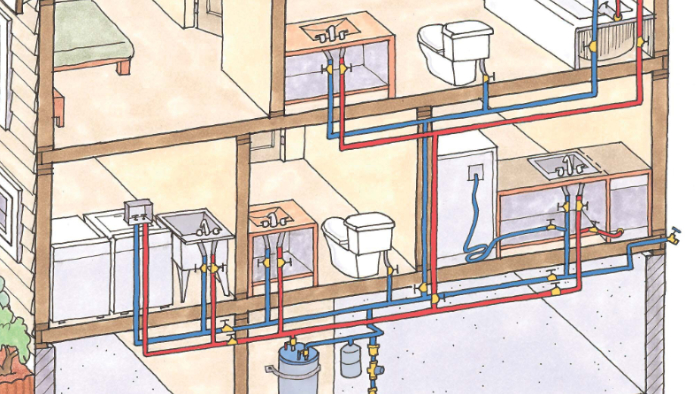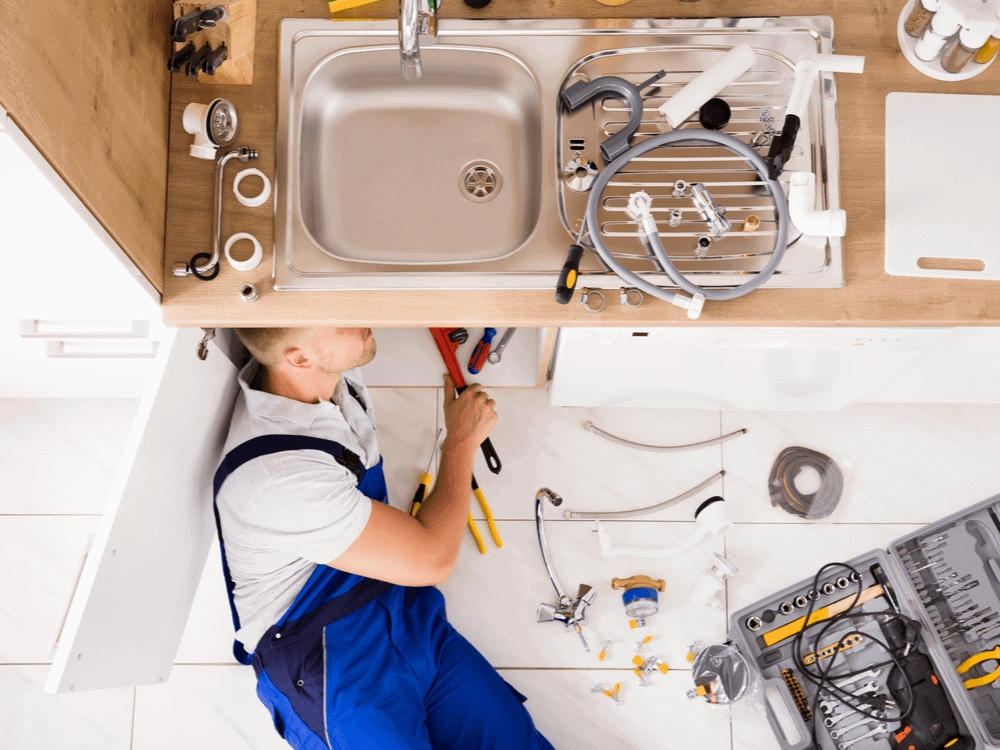Just how do you really feel in regards to Anatomy of a House: Understanding the Components?

Understanding just how your home's plumbing system works is crucial for each home owner. From delivering clean water for alcohol consumption, cooking, and bathing to safely eliminating wastewater, a properly maintained plumbing system is important for your family members's health and convenience. In this thorough guide, we'll check out the detailed network that makes up your home's plumbing and deal pointers on maintenance, upgrades, and managing typical concerns.
Introduction
Your home's pipes system is greater than simply a network of pipelines; it's a complex system that ensures you have accessibility to tidy water and efficient wastewater removal. Understanding its elements and just how they work together can help you stop pricey repair services and make certain whatever runs efficiently.
Fundamental Parts of a Plumbing System
Pipes and Tubing
At the heart of your plumbing system are the pipes and tubes that lug water throughout your home. These can be constructed from numerous products such as copper, PVC, or PEX, each with its benefits in terms of sturdiness and cost-effectiveness.
Components: Sinks, Toilets, Showers, and so on.
Components like sinks, commodes, showers, and tubs are where water is used in your house. Comprehending how these components link to the plumbing system assists in diagnosing issues and planning upgrades.
Valves and Shut-off Factors
Shutoffs manage the circulation of water in your pipes system. Shut-off shutoffs are vital throughout emergencies or when you need to make fixings, permitting you to isolate parts of the system without disrupting water circulation to the whole home.
Water Supply System
Key Water Line
The major water line links your home to the municipal water or a private well. It's where water enters your home and is distributed to various components.
Water Meter and Stress Regulator
The water meter actions your water use, while a pressure regulatory authority makes sure that water flows at a secure pressure throughout your home's pipes system, avoiding damage to pipelines and fixtures.
Cold Water vs. Warm water Lines
Understanding the difference in between cold water lines, which provide water straight from the primary, and hot water lines, which carry warmed water from the hot water heater, assists in troubleshooting and planning for upgrades.
Water drainage System
Drain Pipes Pipeline and Traps
Drain pipes lug wastewater far from sinks, showers, and toilets to the sewage system or septic tank. Catches avoid sewer gases from entering your home and additionally catch debris that could create blockages.
Ventilation Pipelines
Air flow pipes permit air right into the drainage system, protecting against suction that could reduce drainage and cause traps to vacant. Proper air flow is necessary for preserving the integrity of your pipes system.
Significance of Proper Drain
Guaranteeing correct drain prevents back-ups and water damage. Frequently cleansing drains and preserving catches can prevent expensive fixings and extend the life of your pipes system.
Water Furnace
Types of Hot Water Heater
Hot water heater can be tankless or traditional tank-style. Tankless heating units warmth water on demand, while tanks keep warmed water for instant usage.
Upgrading Your Plumbing System
Factors for Updating
Updating to water-efficient fixtures or replacing old pipelines can boost water top quality, reduce water expenses, and raise the value of your home.
Modern Pipes Technologies and Their Advantages
Explore innovations like wise leakage detectors, water-saving bathrooms, and energy-efficient hot water heater that can save money and lower environmental effect.
Price Considerations and ROI
Compute the upfront expenses versus lasting savings when thinking about plumbing upgrades. Lots of upgrades spend for themselves via decreased energy costs and fewer repair work.
Exactly How Water Heaters Attach to the Plumbing System
Comprehending just how hot water heater connect to both the cold water supply and hot water circulation lines aids in diagnosing problems like not enough warm water or leaks.
Maintenance Tips for Water Heaters
On a regular basis purging your water heater to remove sediment, inspecting the temperature level setups, and inspecting for leaks can prolong its life-span and boost power performance.
Typical Pipes Concerns
Leakages and Their Reasons
Leakages can occur due to aging pipes, loose installations, or high water stress. Resolving leakages immediately stops water damages and mold and mildew development.
Obstructions and Obstructions
Blockages in drains pipes and commodes are usually brought on by purging non-flushable things or a build-up of oil and hair. Making use of drainpipe screens and being mindful of what decreases your drains can avoid blockages.
Indications of Pipes Troubles to Look For
Low water pressure, slow drains, foul odors, or abnormally high water costs are indicators of prospective pipes issues that need to be attended to without delay.
Plumbing Maintenance Tips
Routine Assessments and Checks
Schedule yearly plumbing inspections to catch issues early. Seek indicators of leakages, rust, or mineral accumulation in faucets and showerheads.
Do It Yourself Upkeep Tasks
Simple jobs like cleaning tap aerators, looking for toilet leakages utilizing color tablets, or insulating subjected pipelines in chilly environments can avoid major pipes concerns.
When to Call an Expert Plumbing Professional
Know when a plumbing concern needs professional proficiency. Attempting complex repair work without appropriate expertise can result in more damages and greater repair costs.
Tips for Minimizing Water Use
Simple practices like fixing leaks immediately, taking much shorter showers, and running full loads of washing and recipes can preserve water and lower your utility expenses.
Eco-Friendly Pipes Options
Take into consideration sustainable plumbing products like bamboo for floor covering, which is durable and eco-friendly, or recycled glass for countertops.
Emergency situation Readiness
Actions to Take Throughout a Pipes Emergency
Know where your shut-off valves are located and exactly how to switch off the water in case of a ruptured pipe or major leakage.
Relevance of Having Emergency Contacts Useful
Maintain contact details for neighborhood plumbing professionals or emergency situation solutions readily available for quick response during a plumbing crisis.
Environmental Impact and Conservation
Water-Saving Fixtures and Appliances
Installing low-flow faucets, showerheads, and toilets can dramatically minimize water use without compromising performance.
DIY Emergency Fixes (When Appropriate).
Short-term repairs like using duct tape to patch a leaking pipeline or putting a container under a leaking faucet can minimize damages up until a professional plumbing arrives.
Conclusion.
Comprehending the composition of your home's pipes system encourages you to keep it properly, conserving money and time on repair services. By complying with routine upkeep regimens and remaining notified regarding modern pipes technologies, you can ensure your plumbing system operates effectively for several years ahead.
Understanding Your Home Plumbing System: A Comprehensive Guide
Plumbing System: The Lifeline of Your Home
At its core, the plumbing system is designed to perform two primary functions: bring fresh water into your home and remove wastewater. The system is a network of pipes, fixtures, and other components that transport water and sewage. Residential plumbing systems include potable water supply lines, drain-waste-vent (DWV) systems, and various plumbing fixtures that make water use in daily tasks possible.
Key Components:
Water Supply: This part of your plumbing system brings municipal water into your home, passing through the main water supply line. It s responsible for supplying all water needs, from drinking to bathing.
Drainage System: It carries waste and water away from your home to the sewer or septic system. This system includes all the piping within your home that leads to external sewage or septic systems.
Vent System: An essential yet often overlooked component, the vent system allows sewer gases to escape and lets air into the drainpipes, ensuring water and waste move correctly through the system.
Fixture: More Than Just Taps and Toilets
Plumbing fixtures are the most interactive parts of the plumbing system, including faucets, showers, toilets, and sinks. Each fixture is connected to the plumbing system and plays a role in either the delivery of freshwater or the disposal of waste and wastewater.
Types of Fixtures:
Faucets and Sinks: Used for washing hands, dishes, and other daily water needs. Toilets: Dispose of human waste through the sewage system. Bathtubs and Showers: Provide bathing facilities, requiring both hot and cold water supply. Water Supply: The Source of Life
The water supply system is a critical component, ensuring that potable water is available throughout your home for various uses, including drinking, cooking, and cleaning. This system consists of pipes that distribute water to different parts of the house, controlled by valves to regulate the water flow.
Types of Plumbing: Materials and Methods
Various types of plumbing systems and materials are used in residential settings, each with its advantages and applications. From copper and PVC pipes for water supply to cast iron and ABS for drainage, the choice of materials can impact the longevity and efficiency of your plumbing system.
https://intownplumbingtx.com/articles/home-plumbing-system-guide/

We were shown that report about The Inner Workings of Your Home's Plumbing from a pal on a different website. Sharing is nice. Helping people is fun. Thanks for taking the time to read it.
Book Today